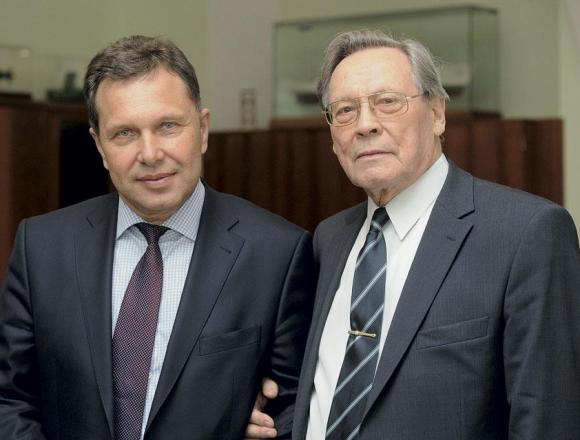The academic Yuri Mikhailovich Mikhailov is a renowned scientist, science and industry Organiser. deputy chairman of the Military-Industrial Commission the Government of the Russian Federation and chairman of its scientific and technical forum. Yuri Mikhailov discusses the significance of the rare earth metals industry in an exclusive interview for the magazine «The Rare Earth».
- The Rare Earth: Yuri Mikhailovich, last year Vladimir Putin met with the Minister of Industry and Trade Minister D.V. Manturov. The main topic of the meeting was how to provide the industry with rare earth metals. The Russian president said: ‘Once the Soviet Union held a decent position in this sector, and now we have certain problems’. How is it that Russia is facing a shortage of rare earth metals, and what are the ways out of this situation?
- The USSR had a developed rare-earth industry, offering a full production cycle. The total production of rare-earth products in 1991 reached 8.5 tonnes, accounting for about 15% of the world market and the USSR occupied the third place in the world. Like in China, we can consolidate existing rare earth production, primarily in the Russian state corporation sector, creating strategic alliances with foreign consumers and producers of rare-earth products.
- Currently, domestic demand is fully met by REM imports from China and Kazakhstan. Are there any government measures to attract private traders to participate in the development of the rare earth industry and rare metals?
- Russia’s accession to the WTO requires a change in the arsenal of instruments of state support. The emphasis is now placed on the support of demand, building a system of long-term, stable and predictable industrial relations, and project financing.
- What are the trends in the rare earths global market? How do you assess China’s position?
- After China’s introduction of the rare earth export quotas, the international market increased dramatically, and there is no deficiency in materials. However, the creation of their own production of oxides and pure REM will enable Russian producers of final products to completely withdraw from their dependence on imports. Until mid-2011 the price level was determined by China’s REM export quotas, which in 2010, were sharply reduced in volume. Plus the Chinese announced the possible withdrawal by 2015-2016 of the export of group REM oxides due to the rising domestic consumption and depletion of the resource base. This has led to a jump in prices on the market outside of China: in 2010 and the first half of 2011, the prices on REM rose by 5-10 times. REM consuming countries (USA, Japan, South Korea and the EU) have taken extra measures to promote scientific and technological base and to support the companies with a diversified sources of raw materials. Today the market of rare earth metals is growing rapidly — over the last 50 years its volume has increased 25 times - from 5 to 125 tons per year. It is predicted that by 2020, the global demand for rare earth metals will grow 1.5 times to reach 185 thousand tons per year. The offers on the REM market will exceed the demand — due to the excess of lanthanum, cerium and other light rare-earth metals. However, dysprosium, terbium, neodymium, yttrium, praseodymium and europium will remain scarce for the major developed countries for a long time.
